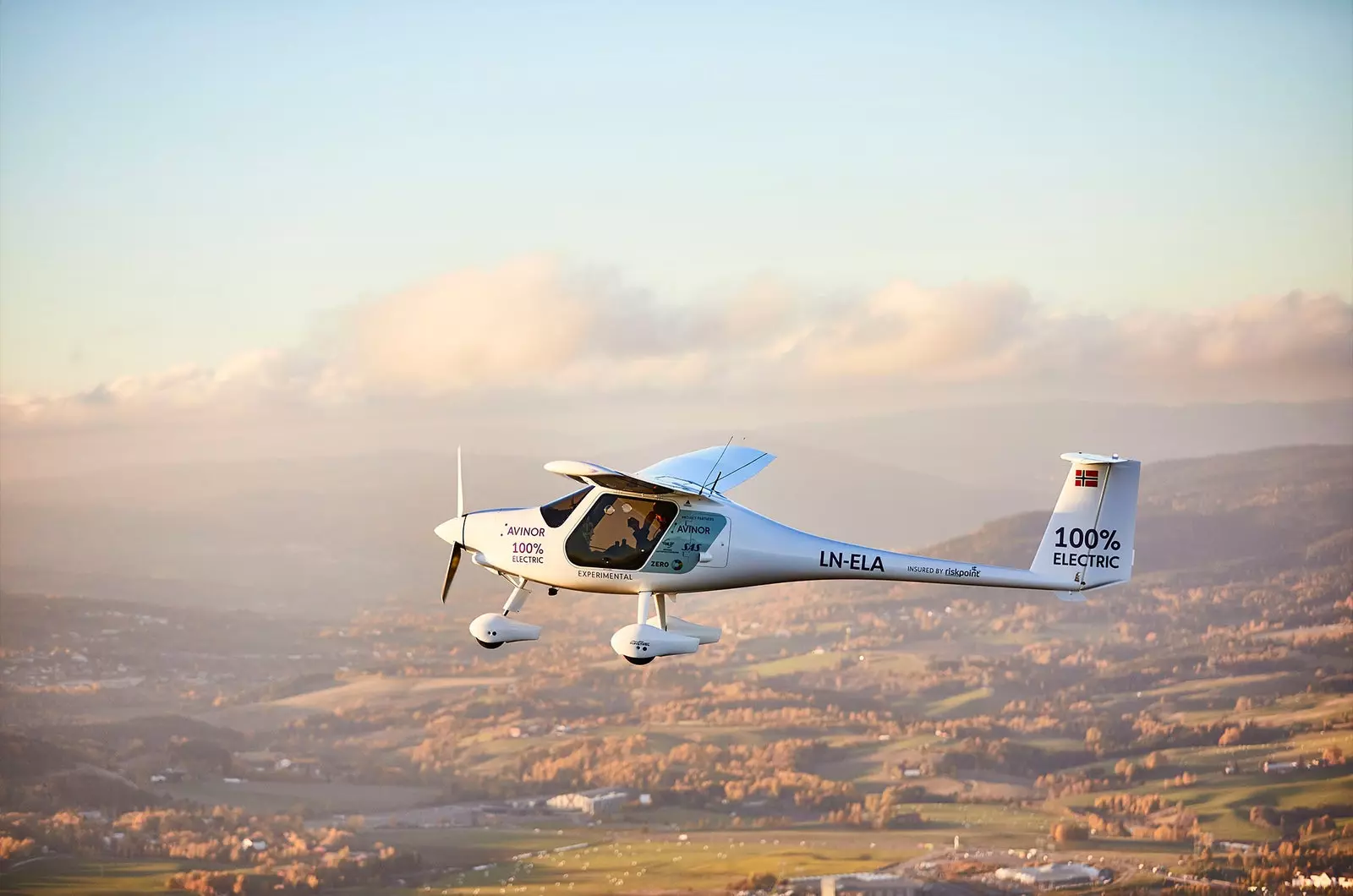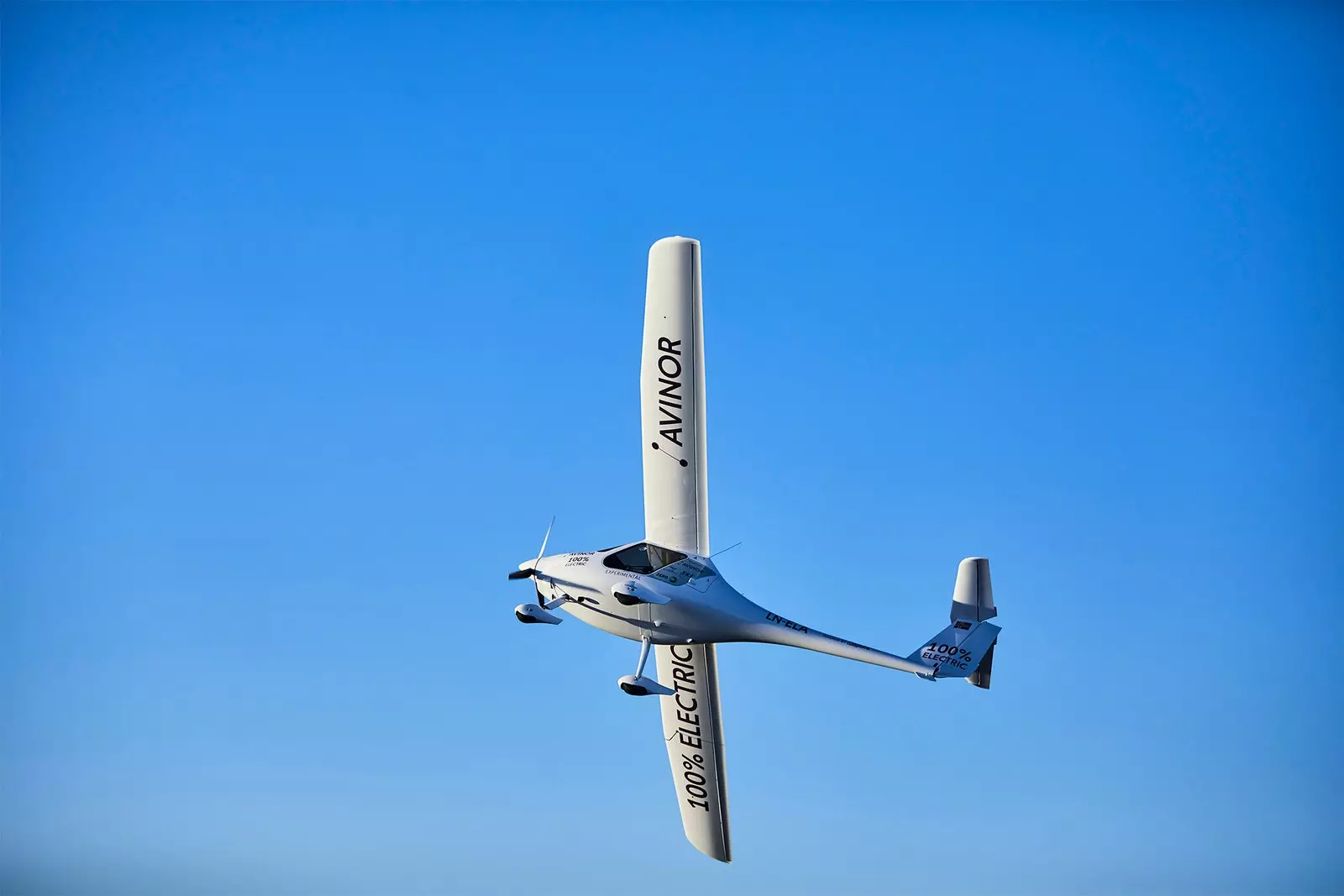
Norway's first electric plane is a two-seater
That traveling by plane pollutes is something that we all sensed, but the issue is acquiring special relevance lately: the Swedish Maja Rosen and Lotta Hammar, for example, they have decided not to fly in all of 2019 - and 14,000 people have said they will do the same. Now, Avinor, the Norwegian aeronautical operator, proposes a possible solution that does not involve stopping flying, but rather trying to make our trips more sustainable by making all domestic flights in the country are carried out on electric aircraft by 2040.
For now, the idea remains platonic, but, according to Olav Mosvold Larsen, director of Avinor's Carbon Reduction Program, it is based on current information provided by aircraft manufacturers. In fact, at the end of June, the Israeli company Eviation already presented at the Paris Air Show the first all-electric commercial passenger aircraft, Alice.
For now, the ship is only a prototype -it is expected to begin operations in 2020-, but among its characteristics is the power to transport nine passengers on a journey of up to 1,040 kilometers away, at 440 kilometers per hour.
For Larsen, in fact, there are no major technical obstacles for electric planes to be able to fly, but "the projects must be financed, the aircraft must be certified and the entire aviation 'ecosystem' must be ready", he assures. And that is where the Norwegian initiative comes in, promising that all light electric aircraft will be able to use its airports and charge for free in the appropriate infrastructure. "The Norwegian government has promised to help accelerate the development of electric aircraft, and I think we will also see incentives and political instruments if necessary," adds the expert.
The country's commitment to aviation of this type is such that Avinor already has a two-seater electric plane purchased from the Slovenian manufacturer Pipistrel . However, as Larsen acknowledges, the current aircraft available are small and have a very limited autonomy (in this case, one hour and 130 kilometers of flight plus reserves).
HYBRID AIRCRAFT
Avinor claims that already this year hybrid aircraft will take to the skies , which implement electric motors in existing aircraft to reduce development costs. With all these advances, Larsen calculates that, by 2025, small hybrid or electric aircraft could already be flying (less than 19 seats) domestically, a “perfect solution for many routes in Norway”.
For aircraft that cover long distances, however, it does not seem that the process will be so fast. . Much lighter batteries would be needed, which, for now, do not exist. “But who knows in the future?” Larsen launches “To ensure sufficient range and capacity, designers are 'compensating' for today's heavy batteries with hybrid electric architectures or range extenders, that is, turbo generators that can charge batteries in flight. There are also some very interesting hydrogen fuel cell projects out there,” says the director.
Thus, Larsen ensures that Airbus, Siemens and Rolls Royce are working on power transport 100 passengers 1,000 kilometers in a hybrid electric aircraft , something that is expected to happen in the 2030s. In fact, Airbus itself has stated, according to what it tells us, that perhaps the next generation of its 320 series could also be available in a hybrid version.

By 2025 they could be flying electric planes with around 20 seats
100% electric planes, as explained by the professional, will not release emissions into the atmosphere , but with hybrid solutions there could be some. Of course, in both cases, the noise footprint is expected to be much smaller, but other types of contamination, such as that produced by the chemicals used to de-ice the plane's surface in case of ice, snow or frost, are they will stay the same.
“For long-distance flights with low emissions, we will have to rely on sustainable fuels for aviation”, he sums up.
NORWAY: ELECTRICAL TRANSPORTATION... AND OIL PLANTS
In Norway, more than 40% of new cars sold are fully electric, and, according to Larsen, the government has already committed to the goal that, by 2025, all new passenger cars and light commercial vehicles will be zero emissions . What's more: there are even some electric and hybrid ferries already in operation.
For this reason, it makes sense that it is precisely from this country that the initiative to electrify the entire aeronautical fleet is born. However, how does that effort square with the fact that Norway itself is a state that pollutes a lot due to its large hydrocarbon export business ?
“It is completely true that Norway is a large oil producer, and that much of our national wealth comes from fossil fuel exports. I think it is absolutely necessary that Norway, and all the other countries in the world, including the gas-producing countries, combine these two realities to come up with low or zero emission solutions for the future ”, Larsen replies to Traveler.es.
